Best Earth Images of the Month - March 2013

Strange catch

When a fisherman caught a bull shark recently off the Florida Keys, he came across an unlikely surprise: One of the shark's live fetuses had two heads.
The fisherman kept the odd specimen, and shared it with scientists, who described it in a study published online today (March 25) in the Journal of Fish Biology. It's one of the very few examples of a two-headed shark ever recorded there about six instances in published reports and the first time this has been seen in a bull shark, said Michael Wagner, a study co-author and researcher at Michigan State University.
[Full Story: 2-Headed Shark Fetus Netted by Fisherman]
Hope for frog-kind
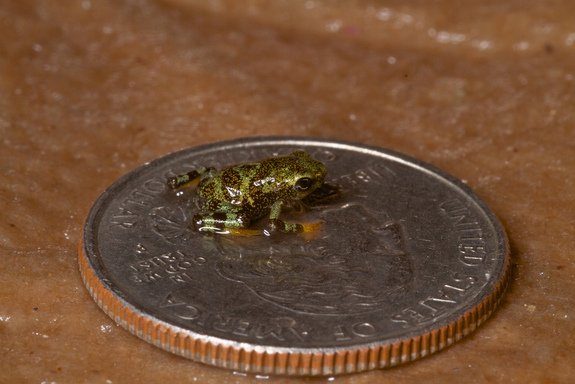
Several teeny-tiny frogs, one big hop for amphibian conservation.
Scientists have successfully bred a certain type of endangered Panamanian amphibian the limosa harlequin frog for the first time. The development is key because populations of the itty-bitty frog, which is smaller than a quarter as a baby, are declining in its native country.
[Full Story: Itsy-Bitsy Endangered Frog Bred in Bid to Save Species]
Spring begins
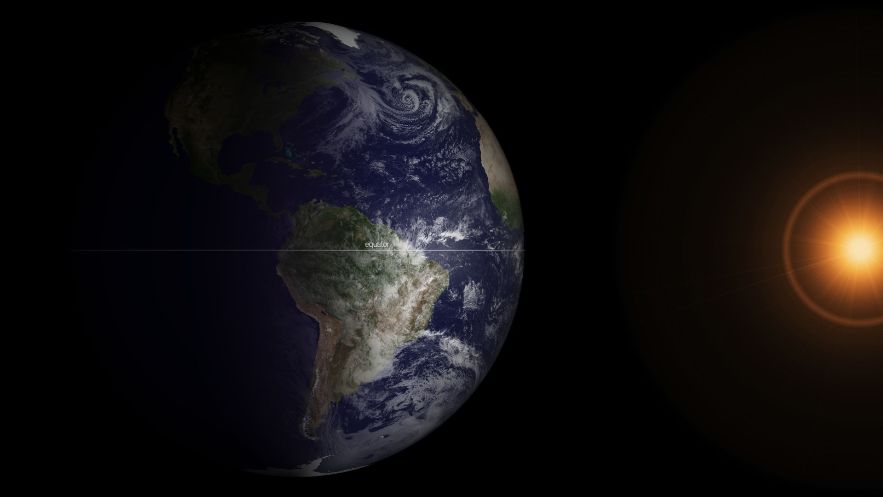
It's that time of year again: the first day of spring.
On this special date, the length of the day and night are about the same for most of the planet. The amount of solar energy delivered to the Northern and Southern Hemisphere is also equal.
[Full Story: What the Spring Equinox Looks Like from Space]
Exciting find
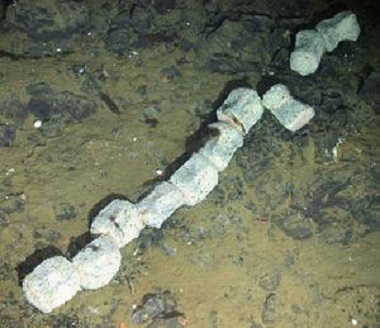
For the first time ever, scientists say they have discovered a whale skeleton on the ocean floor near Antarctica. Resting nearly a mile below the surface, the boneyard is teeming with strange life, including at least nine new species of tiny of deep-sea creatures, according to a new study.
Though whales naturally sink to the ocean floor when they die, it's extremely rare for scientists to come across these final resting places, known as "whale falls." Discovering one typically requires a remote-controlled undersea vehicle and some luck.
[Full Story: Antarctic's First-Ever Whale Skeleton Found]
Signs of Spring

Snow is melting from the dunes at Great Sand Dunes National Park. That's a sure sign that spring is here. It's also the best time for one of the park's favorite pastimes: sandboarding.
Great Sand Dunes National Parkin southern Colorado is home to the tallest dunes in North America, spread over 30 square miles (78 square kilometers). The Sangre de Cristo Mountains loom in the background, but the dunes are the main attraction here. The dunefield was created over millions of years as the sediment from the nearby San Juan Mountains was deposited in lakes and rivers and then exposed, dried and blown away by the wind.
[Full Story: Sure Sign of Spring: Snow Melts at Great Sand Dunes]
Strong storm

Though every day brings more sunlight, February is still one of the coldest months in the Arctic. The sea ice in the Arctic Ocean is now nearing its winter maximum, but the effects of a February storm markedly illustrate the changes that have happened with the Arctic sea ice cover under the effects of climate change.
In past decades, winter meant thick, years-old pack ice would extend over much of the Arctic Ocean. But the modern Arctic's thinner ice cover is more easily pushed by wind, according to Jennifer Francis, an atmospheric scientist at Rutgers University. Other factors, such as global warming, weather patterns and solar heating, also play a role in the loss.
[Full Story: Arctic Storm Shatters Thin Sea Ice]
Welcome package

What weighs 3 pounds, has its eyes closed and is striped?
A newborn male Sumatran tiger cub, born at the Sacramento Zoo on March 3, stands to be a boon for the critically endangered species.
The as-yet-unnamed cub was born to mom Bahagia at 2:55 a.m. and weighed 3 pounds (1.4 kilograms), a good size for a Sumatran tiger cub, which are usually only 2 pounds at birth. Both mother and baby tiger are in good health, the zoo noted in a release.
[Full Story: Sumatran Tiger Cub Born at Sacramento Zoo]
Get the world’s most fascinating discoveries delivered straight to your inbox.
Helping the helpless

Specially trained rescuers recently freed a humpback whale swimming off the island of Maui from a tangle of rope, a potentially life-threatening situation for the animal.
A tour vessel and a U.S. Coast Guard aircraft initially spotted the whale on March 8;the animal had small-gauge line cutting into its tail, according to a release from the National Oceanic and Atmospheric Administration's National Marine Sanctuaries. Observers found the whale in the waters of Hawaiian Islands Humpback Whale National Marine Sanctuary, where humpbacks migrate each winter to mate, calve and nurse their young.
[Full Story: Rescuers Free Whale Entangled in Fishing Gear]
Floating boulders
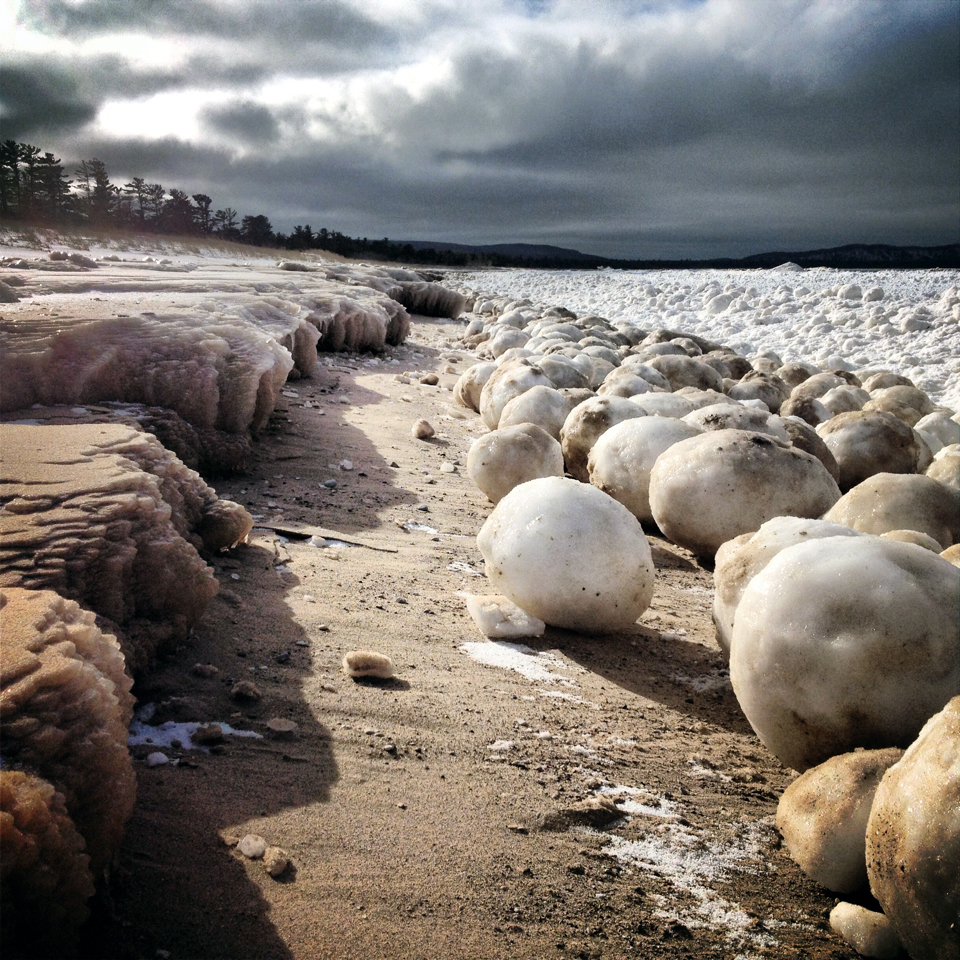
Floating boulders of ice the size of basketballs lined the shores of Lake Michigan last month, and were captured in a photo.
Weighing in at up to 50 pounds (22 kilograms) each, the ice spheres are a winter weather phenomenon resulting from wind and wave action along the shore, according to reporting by NASA's Earth Science Picture of the Day. Small fragments of floating ice act like seeds, with layers upon layers of supercooled lake water freezing around them as the balls churn in the waves. Wind then pushes the ice concretions onshore.
[Full Story: Photo: Massive Ice Balls Along Lake Michigan]
Big haul
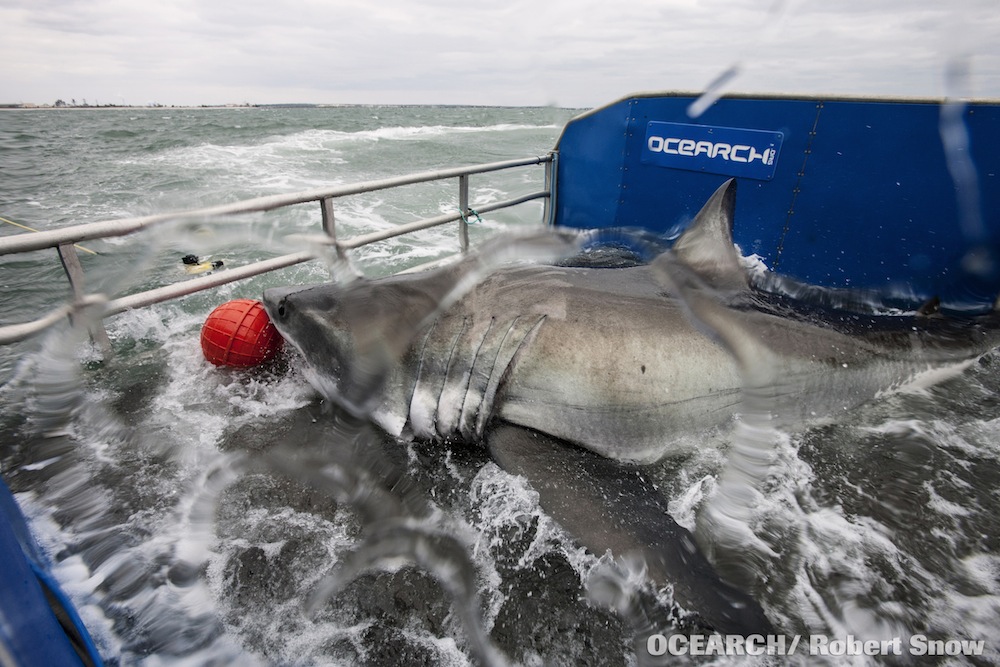
A 2,000-pound (907 kilogram) great white shark nicknamed "Lydia" is doing deep dives after being hauled aboard a research vessel and tagged by scientists hoping to learn more about the behavior of these massive toothy fish in the wild.
Lydia is the first great white tagged and released in Florida waters, according to OCEARCH, a nonprofit that worked with Mote Marine Laboratory scientists and other researchers to corral and trap the 14-foot (4.3 meter) beast on March 3.
[Full Story: 2,000-Pound Great White Shark Tagged & Tracked]
Natural a/c
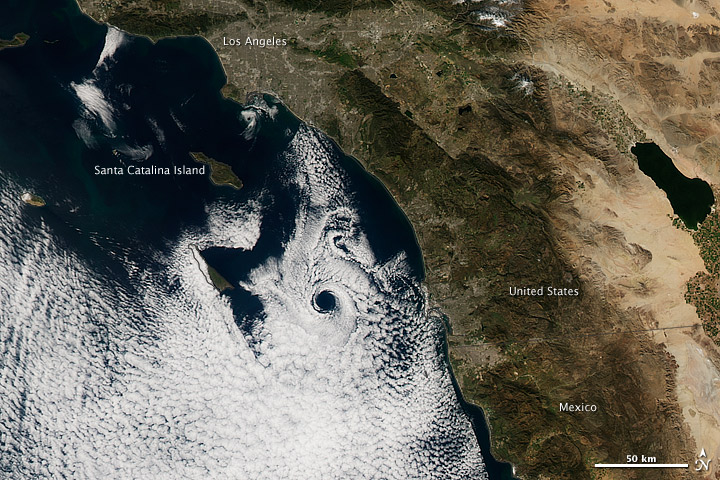
In the hot summer months, coastal Californians enjoy cooler weather than inland residents thanks to a cooling offshore vortex called the Catalina Eddy.
NASA's Aqua satellite snapped a picture of weather pattern from space on Feb. 17 as the winds swirled counterclockwise west of San Diego. Clouds form a bull's-eye over the ocean between the Southern California coastline and the Channel Islands. The eddy's namesake is Santa Catalina Island, the largest of the Channel Islands.
[Full Story: Space Snapshot Reveals California's Catalina Eddy]



